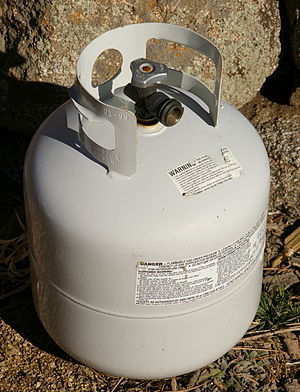It is common knowledge in the architecture/engineering (A/E) professions that buildings consume a large portion of the total energy consumed in the United States (approximately 40 percent)[1]. This awareness serves as an essential motivator for the green building movement and the associated energy efficiency agenda in the A/E industry. As a growing number of building professionals work to improve the efficiency and sustainability of the built environment, it is worth considering how progress toward a more efficient and sustainable built environment may be constrained by industry conventions, standards, and disciplinary boundaries. You can view the industry’s concept of “whole building” energy consumption as one such constraint.
Parts of the “Whole”
The term “whole building” consumption provides insight into the A/E industry’s current perspective and vision for reducing building energy consumption. “Whole building” is commonly used by A/E professionals in the context of building energy simulation, analysis, and design. It refers to the inclusion of multiple, interactive, and often time-variant building energy systems that account for a building’s total consumption (See Figure 1 below). These systems include not only the various energy consumption end-uses (e.g., HVAC, lighting, DHW, etc.), but also the onsite and utility energy sources and their associated efficiencies. However, what in concept is a very comprehensive and holistic accounting of total facility energy consumption, is in practice, a more limited scope of energy conservation measures. That is to say, in building energy modeling, “whole building” most often accounts for all significant consuming processes; however, when it comes to incorporating energy conservation measures into building designs, the “whole” becomes less than whole.
The “Hole” in “Whole”
To understand the limits of the “whole building” concept, you need look no further than the performance requirements of ANSI/ASHRAE/IESNA Standard 90.1: Energy Standard for Buildings Except Low-Rise Residential Buildings. The standard, commonly referred to as “ASHRAE 90.1,” outlines the accepted methods for using a whole building energy simulation to demonstrate compliance with the standard, or to quantify the energy savings of design alternatives (as is typically done for LEED certified projects). Although the whole building is considered for modeling interacting building sub-systems, the scope of the standard is limited to the design features that are controlled by architects and engineers. In essence, ASHRAE 90.1 reflects and codifies the limited scope of energy conservation in the A/E industry.
Figure 2 outlines the scope of energy conservation in the A/E industry as it relates to whole-building consumption. Only the elements shown in white are considered to be within the purview of an A/E design team – the gray boxes indicate relevant energy consuming entities or systems that are currently not included. Interestingly, this includes building people movers, (e.g., elevators and escalators) which are unregulated electrical loads (miscellaneous equipment). The “construction, maintenance” box in Figure 2 represents all of the energy-consuming, building life cycle activities (e.g., fabrication, assembly, replacement, etc.) and building material embodied energy (e.g., material extraction, refining, manufacture, etc.). The energy associated with construction and material embodied energy likely contributes less than 15 percent of a building’s life cycle energy consumption [3, 4]. Transportation, which is an essential activity for accessing any building, is by far the largest consuming activity or system that is not explicitly accounted for in A/E energy conservation measures. Green building rating systems, such as LEED and Green Globes, do include prescriptive design credits aimed at reducing single occupant vehicle trips for new and existing buildings, but not in a way that actually quantifies or manages the transportation energy consumption. In the popular green building periodical Environmental Building News, Alex Wilson and Rachel Navaro have estimated that for a typical commercial office building, transportation energy use may exceed building operation energy use by approximately 30%. [5] For buildings built to meet ASHRAE 90.1, they estimate that transportation energy use may exceed building operation energy use by 137%.
How to Be Whole
To be fair, we should recognize that the scope of “whole building” energy conservation in the A/E industry is not some half-baked conceptualization of a building’s life cycle energy inventory. Rather, the scope currently traces the traditional boundary of professional design services for building energy efficiency. Nevertheless, as the green building and building energy efficiency movements push toward a more sustainable built environment, important opportunities will be found by architects and engineers in making “whole building” energy conservation more whole. Such opportunities include:
- Designing building structures and fit-outs with lower embodied energy;
- Designing buildings and spaces that are less dependent upon motorized people movers for occupant circulation;
- Specifying IT (communications) infrastructure that supports higher efficiency equipment and network architecture; and
- Selecting building sites that leverage transportation network efficiencies for building occupant access (a considerable opportunity for energy conservation and a major focus of my graduate research).
Making “whole building” energy conservation truly “whole” starts by recognizing the important ways that A/E professionals and building owners influence the performance of each of the interacting energy system in our buildings. New opportunities for energy conservation, within and beyond the building sector, will be realized as we learn to expand the scope and value of green building services.
References:
[1] National Energy Technology Laboratory, 2010 Buildings Energy Data Book. Department of Energy, Washington, D.C., 2011, Table 1.1.3.
[2] Barley, D., et al. National Renewable Energy Laboratory, Procedure for Measuring and Reporting Commercial Building Energy Performance. NREL/TP-550-38601, U.S. Department of Energy, Washington, D.C., 2005.
[3] Junnila, S. and A. Horvath. Life-Cycle Environmental Effects of an Office Building. In Journal of Infrastructure Systems, Vol. 9, No. 4, 2003, pp. 157 - 166.
[4] Norman, J., H. MacLean, and C. Kennedy. Comparing High and Low Residential Density: Life-Cycle Analysis of Energy Use and Greenhouse Gas Emissions. In Journal of Urban Planning and Development, Vol. 132, No. 1, 2006, pp. 10-21.
[5] Wilson, A. and R. Navaro. Driving to Green Buildings: The Transportation Energy Intensity of Buildings. In Environmental Building News, September, 2007.



